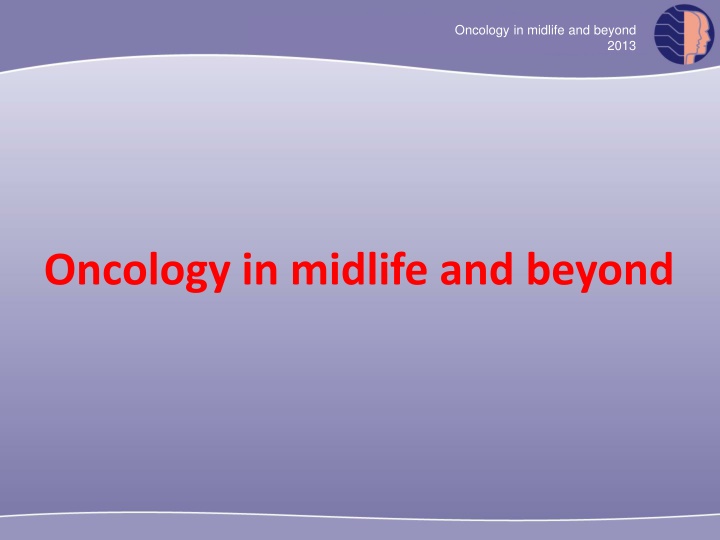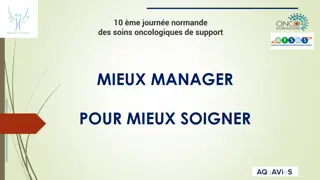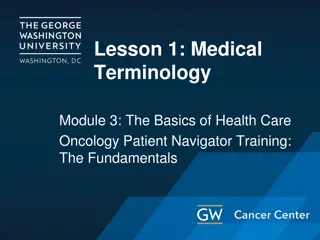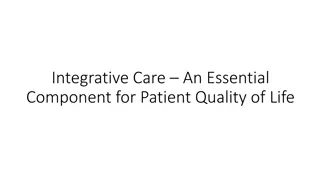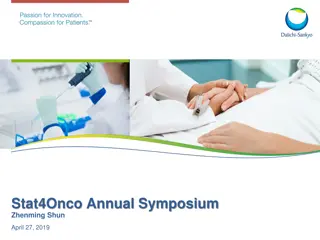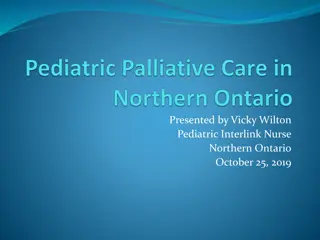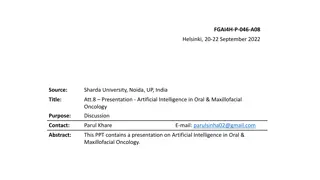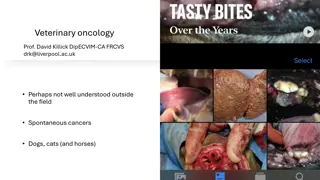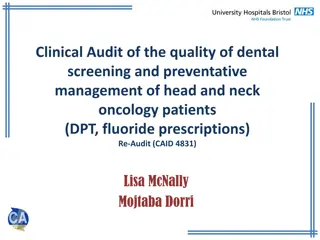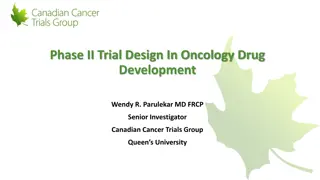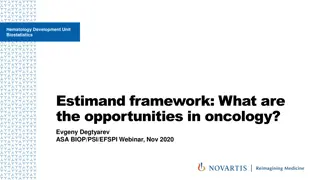Oncology in midlife and beyond
This content provides insights into oncology in midlife and beyond, focusing on cancer statistics, life expectancy, main cancer types like breast and lung cancer, and their impact on mortality rates worldwide. It discusses the prevalence of different cancers, such as breast cancer being a leading cause of cancer-related deaths in various countries, lung cancer's association with smoking, and differences in incidence across regions. The data sheds light on the importance of understanding cancer trends and risk factors for better health management.
Download Presentation

Please find below an Image/Link to download the presentation.
The content on the website is provided AS IS for your information and personal use only. It may not be sold, licensed, or shared on other websites without obtaining consent from the author.If you encounter any issues during the download, it is possible that the publisher has removed the file from their server.
You are allowed to download the files provided on this website for personal or commercial use, subject to the condition that they are used lawfully. All files are the property of their respective owners.
The content on the website is provided AS IS for your information and personal use only. It may not be sold, licensed, or shared on other websites without obtaining consent from the author.
E N D
Presentation Transcript
Oncology in midlife and beyond 2013 Oncology in midlife and beyond
Oncology in midlife and beyond 2013 Life expectancy for women at birth (Anderson BO et al. 2010. Lancet Oncol 2011;12:387 98) 57.8 years in low-income countries 69.3 years in lower middle-income countries 74.4 years in upper middle-income countries 82.4 years in high-income countries
Oncology in midlife and beyond 2013 Cancer is an important cause of death but not the primary cause of mortality Cardio/circulatory diseases represent 35 40% of causes of death in most developed countries, 32 48% in Latin America and the Caribbean (PAHO 2011), 70% in Eastern Europe, 60% in Central Europe and Central Asia, and 45% in North Africa and the Middle East (healthmetricsandevaluation, 2010) 20 25% of women will die from cancers in Western Europe, Australasia, high-income North America, high- income Asia Pacific, East Asia and Southern Latin America
Oncology in midlife and beyond 2013 Main cancers: breast, lung, colorectal and cervical breast cancer : 13.7% of the mortality from cancer in women lung cancer : 12.8% colorectal cancer : 8.6% cervical cancer : 8.2%. ovarian cancer :4.2% uterine corpus (endometrial) cancer :2.2%
Oncology in midlife and beyond 2013 Breast cancer In 2010, 1,643,000 new cases and 458,503 deaths (Globocan 2008) as common in developed countries (49%) as in developing countries (51%) is the first cause of mortality by cancer in Argentina (20.6%), Belgium (20%), Israel (19%), France (18.6%), Germany (17.3%), Switzerland (17%), Italy (16.8%), Portugal (16.5%), Austria (16.2%), Brazil (14%) and Chile (12.3%) differentiation populations Histological varies among different It is a predominantly post menopausal in developed countries and premenopausal in Asia, north Africa
Oncology in midlife and beyond 2013 Lung Cancer In 2010, 515 999 new cases and 427,586 deaths (Globocan 2008) Main risk factor: smoking Increasing incidence in non smokers (adenocarcinoma) from 15.9% in the 1970s to 32.8% in the 2000s (Lee et al, BMC Cancer 2013; Yano et al, Int J Clin Oncol 2011) Incidence decreases in western countries because of the decrease in smoking, but it continues to increase in Asia and especially in China leading cause of cancer mortality, in the USA, Canada, Hong Kong, China, UK, Denmark, Norway, Sweden and Korea
Oncology in midlife and beyond 2013 Cervical cancer In 2010, 454,000 new cases and 200,000 deaths (IHME, Lancet 2011) 76% of cervical cancer cases occur in developing countries: hallmark of low income countries and low access to health care system Pap smears is an extremely potent method of screening and when implemented has help to decrease incidence and mortality rates in many countries HPV vaccination could also help to decrease the burden but remains expensive
Oncology in midlife and beyond 2013 Colorectal cancers 571,204 new cases and 288,654 deaths (Globocan 2008) 10.1% of all incident cancers in women world-wide 63% in developed countries highest incidence rates in Australia, New Zealand, Canada, the USA and parts of Europe (Haggar et al, Clin Colon Rectal Surg 2009) lowest risk in China, India, and parts of Africa and South America (Haggar et al, Clin Colon Rectal Surg 2009)
Oncology in midlife and beyond 2013 Risk factors and burden of diseases (IHME) The three leading risk factors for global disease burden in 2010 were high blood pressure, tobacco smoking (including second-hand smoke) and accounting for 7%, 6.3% and 4.3%, respectively, of disability-adjusted life years (DALYs). household air pollution, Dietary risk factors and physical inactivity accounted for 10% of DALYs Obesity / overweight are the leading disease risk factor in Australasia, high-income North America, Western Europe, North Africa, the Middle East, Southern, Central and Andean Latin America, the Caribbean and Oceania
Oncology in midlife and beyond 2013 Risk factors and deaths in 2010 (Lim SS et al , Lancet 2012, from IHME) Number of deaths 95% intervals of uncertainty Risk factor Smoking 1,443,924 920,763 1,743,849 Second-hand smoke 346,304 252,702 439,439 Alcohol 1,720,059 1,541,469 1,886,125 High body mass index 1,738,466 1,454,008 2,036,059 Dietary factors and physical 5,815,748 5,380,274 6,261,225 inactivity
Oncology in midlife and beyond 2013 Risk factors for lung cancer Smoking Role of particules/pollution Second-hand smoking Paints or paint thinners Welding equipment, smoke soot or exhaust Pre-existing lung diseases such as inflammation Dietary intake of grilled or barbecued meat
Oncology in midlife and beyond 2013 Mortality/incidence of the 4 main cancers
Oncology in midlife and beyond 2013 Preventive strategies to decrease the risk of cancer Stop smoking Control weight Exercise (vigorous exercise for at least 2 3 h/week) < 15 g/day alcohol intake Diet rich in vegetables, fibers and fruits (five fruit and vegetables/day but only two fruits, maximum three), low intake of animal fat, and a low proportion of carbohydrates
Oncology in midlife and beyond 2013 (From Globocan 2008)
Oncology in midlife and beyond 2013 (From Globocan 2008)
Oncology in midlife and beyond 2013 (From Globocan 2008)
